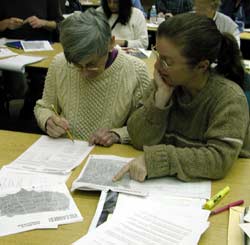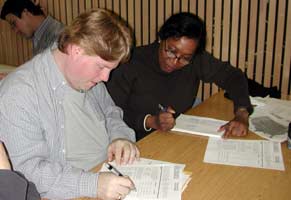|
|
return to
|
||||
Creating an Earth System:
Volcanoes! Activities |
|||||
|
Volcanoes! is an interdisciplinary set of materials for grades 4-8 developed by the US Geological Survey. The lessons focus on the eruption of Mount St. Helens. We examined three of the lessons listed, as described: |
|||||
1. Volcanoes! Up in the air - Lesson 3New vocabulary:
Activity 3.1: Tracking of an Ash Cloud - math-based and reinforces how winds work
|
|||||
2. Volcanoes! Fire, Rock, and Water - Lesson 4New vocabulary:
Students build a mountain, create a landslide, and then create a mudflow. Activity 4.1b: Students use a topo map of Mt. St. Helens to predict and map the mudflows. (Not recommended for younger students) |
|||||
3. Volcanoes! The Snow LineStudents locate and plot 14 volcanoes on a map and then use a snowline diagram to predict whether or not a volcano will have snow on it during the summer, and therefore which volcanoes are most likely to have mudflows. |
|||||
|
Return to: Creating an Earth System I | Dynamic Earth Homepage | UCMP Homepege |
|||||

